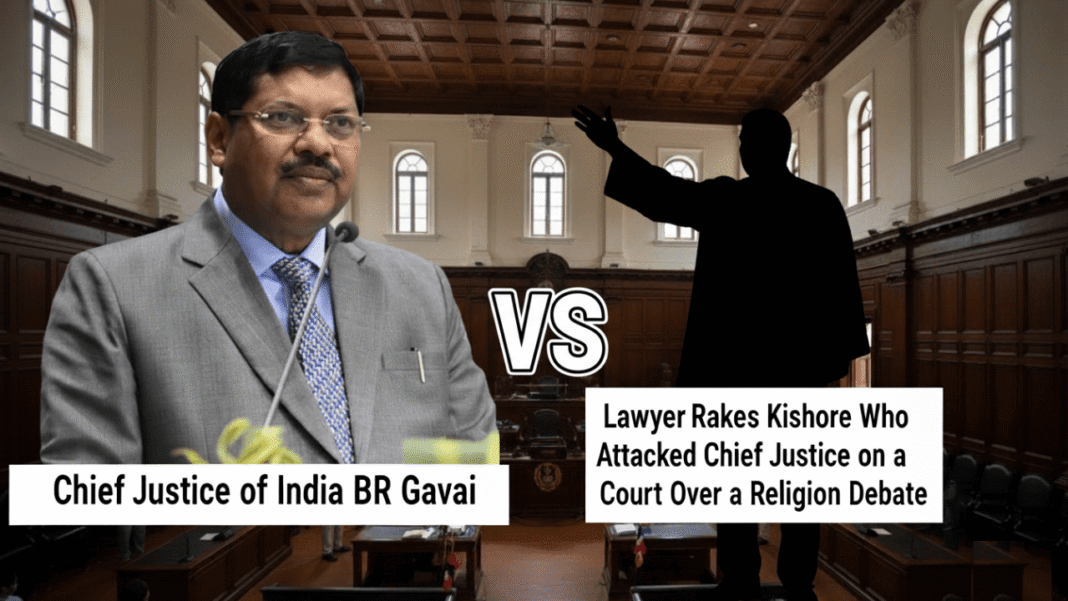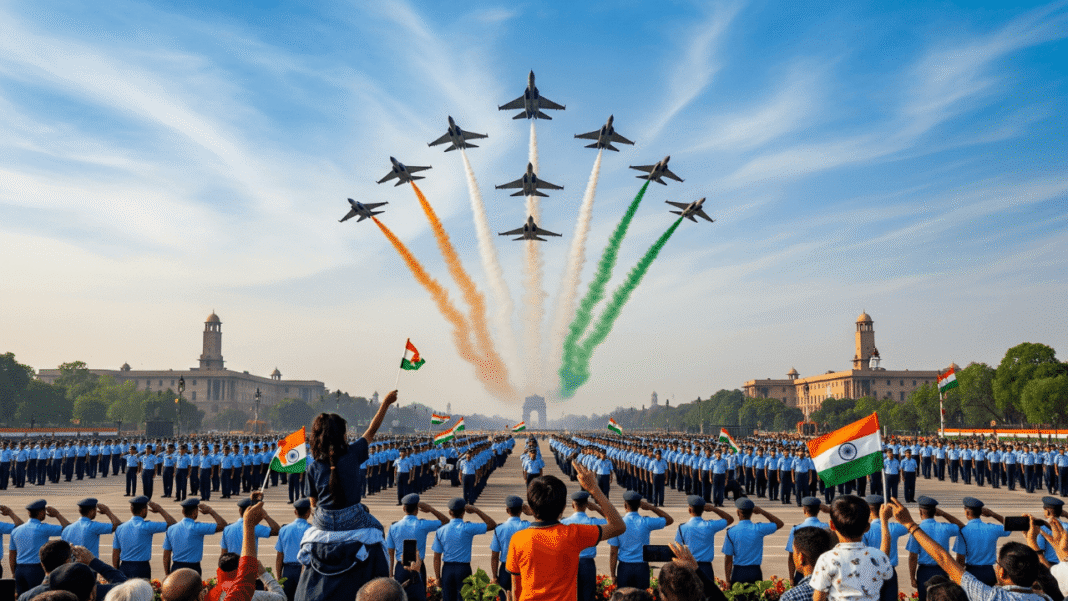New Delhi, October 2025 — In an unprecedented incident that shocked India’s legal community, a senior advocate attempted to hurl a shoe at Chief Justice of India (CJI) B.R. Gavai during ongoing proceedings in the Supreme Court on Monday. The dramatic act unfolded against the backdrop of a growing controversy surrounding remarks made by the Chief Justice in a previous case related to a Hindu deity, which some groups have labelled “disrespectful” and “insensitive.”
A Sudden Outburst in Court No. 1
According to eyewitness accounts and court officials, the incident took place around 11:35 a.m. in Courtroom No. 1, where CJI Gavai was presiding over a bench. During the hearing, a lawyer identified as Rakesh Kishore, a 71-year-old practicing advocate, suddenly removed his shoe and attempted to throw it toward the bench where the Chief Justice was seated.
Security personnel immediately intervened, preventing the shoe from reaching Justice Gavai. Kishore was swiftly restrained and escorted out of the courtroom. The Chief Justice remained composed and unshaken, instructing that the proceedings continue without interruption.
“I am the last person to be affected by such things,” Gavai reportedly remarked, downplaying the disruption and urging focus on the legal matters at hand.
The Backdrop: A Controversial Comment on a Hindu Deity
The shocking incident is widely believed to be a reaction to remarks made by CJI Gavai during a recent hearing concerning a damaged Lord Vishnu idol in Khajuraho. The case involved a petition seeking judicial intervention to restore a seven-foot-tall idol that had lost its head.
During the hearing, the Chief Justice reportedly told the petitioner, “Go and ask the deity himself to do something,” suggesting that faith, rather than litigation, might be a more appropriate response in such matters.
The remark triggered immediate backlash from certain religious groups and sections of the legal community, who accused the Chief Justice of mocking religious beliefs. Social media platforms saw a surge of criticism, with many demanding an apology and even calling for his resignation.
Justice Gavai later clarified his comments, emphasizing that they were not intended to disrespect any faith and that he remained committed to upholding constitutional values and religious freedom. However, the damage was already done — and tensions continued to simmer in and outside the courtroom.
Advocate’s Motive: “No Regret, No Repentance”
After being detained by security personnel, advocate Rakesh Kishore defended his actions in front of reporters. “I was deeply hurt by the comments made about Lord Vishnu. I did what I did out of pain and devotion, not out of anger,” he said. Kishore added that he felt no remorse and that he would “do it again” if necessary.
He further stated that he had written multiple letters seeking a public apology from the Chief Justice but received no response. “When those entrusted with upholding the Constitution mock faith, what choice do we have?” Kishore asked rhetorically.
Institutional Response: Swift and Severe
The legal fraternity responded swiftly to the unprecedented act. The Bar Council of India (BCI) suspended Kishore’s license to practice law pending a full disciplinary hearing, describing his behavior as “gross misconduct” and “inconsistent with the dignity of the legal profession.”
“The act of attempting to assault the Chief Justice of India in a courtroom is a direct assault on the rule of law and the independence of the judiciary,” the BCI said in a statement. “Such behavior will not be tolerated under any circumstances.”
Legal associations across the country — including those in Bengaluru, Goa, and Maharashtra — also issued strongly worded statements condemning the act, emphasizing that while dissent and criticism are part of a healthy democracy, physical aggression against a judge crosses an unacceptable line.
Political and Public Reactions
The incident drew widespread condemnation from across the political spectrum. Prime Minister Narendra Modi described the act as “utterly condemnable” and said it had “angered every Indian who believes in the sanctity of our institutions.” He also praised Justice Gavai’s “remarkable composure and dignity” in handling the situation.
Leaders from opposition parties also expressed disapproval, although some emphasized the importance of addressing public anger over perceived judicial insensitivity. “The frustration reflected in this incident should make us reflect on how disconnected our institutions sometimes are from the sentiments of ordinary people,” said a senior Congress leader.
Public opinion on social media was divided. While a large number of users criticized the lawyer’s behavior as “shameful” and “undemocratic,” others expressed sympathy for his frustration and reiterated their demand for a formal apology from the Chief Justice.
Security and Judicial Independence Under Scrutiny
The incident has also sparked a debate about security protocols inside India’s highest court. Legal experts and security analysts questioned how an individual was able to approach the bench with an object that could be used as a weapon.
“There is an urgent need to review and strengthen courtroom security,” said former Supreme Court judge Justice (Retd.) Madan Lokur. “This was not just a breach of decorum — it was a breach of safety in the country’s most important judicial space.”
Others pointed out that the incident reflects a broader tension between faith, law, and public sentiment. “This is more than just a shoe-throwing incident. It symbolizes the growing friction between judicial authority and popular emotion, particularly when religion is involved,” said constitutional scholar Dr. Meera Narayan.
What Happens Next
While no formal criminal charges have been filed against Kishore — reportedly at the instruction of Justice Gavai himself — the Bar Council’s disciplinary process could lead to permanent disbarment. Legal observers say the incident is likely to spark renewed discussions about judicial accountability, courtroom conduct, and the fine line between protest and contempt.
As the dust settles, the Supreme Court continues its work largely unaffected — but the unprecedented incident has left an indelible mark on the institution’s history. Whether it will lead to deeper reforms or remain an isolated flashpoint remains to be seen.



